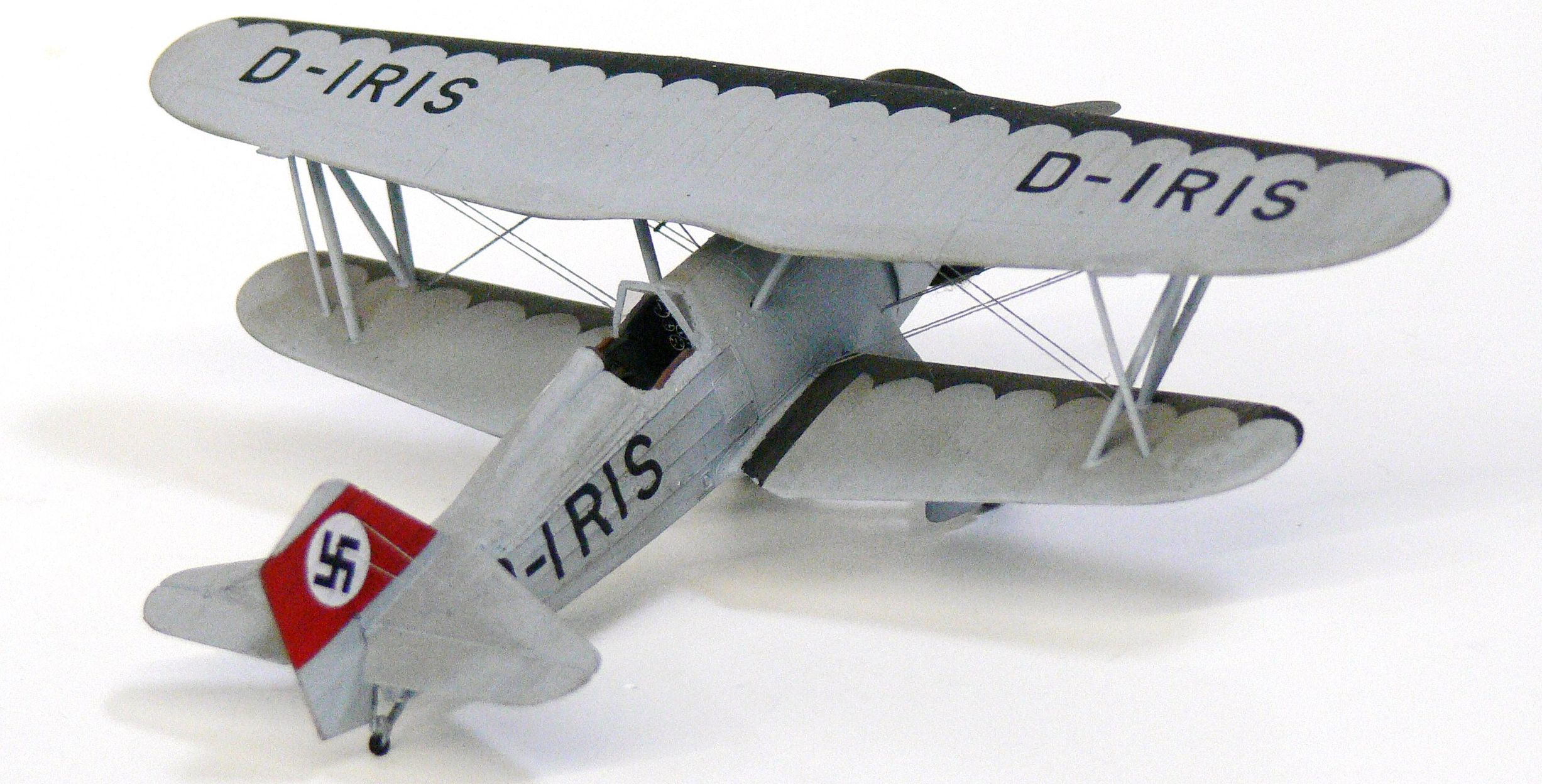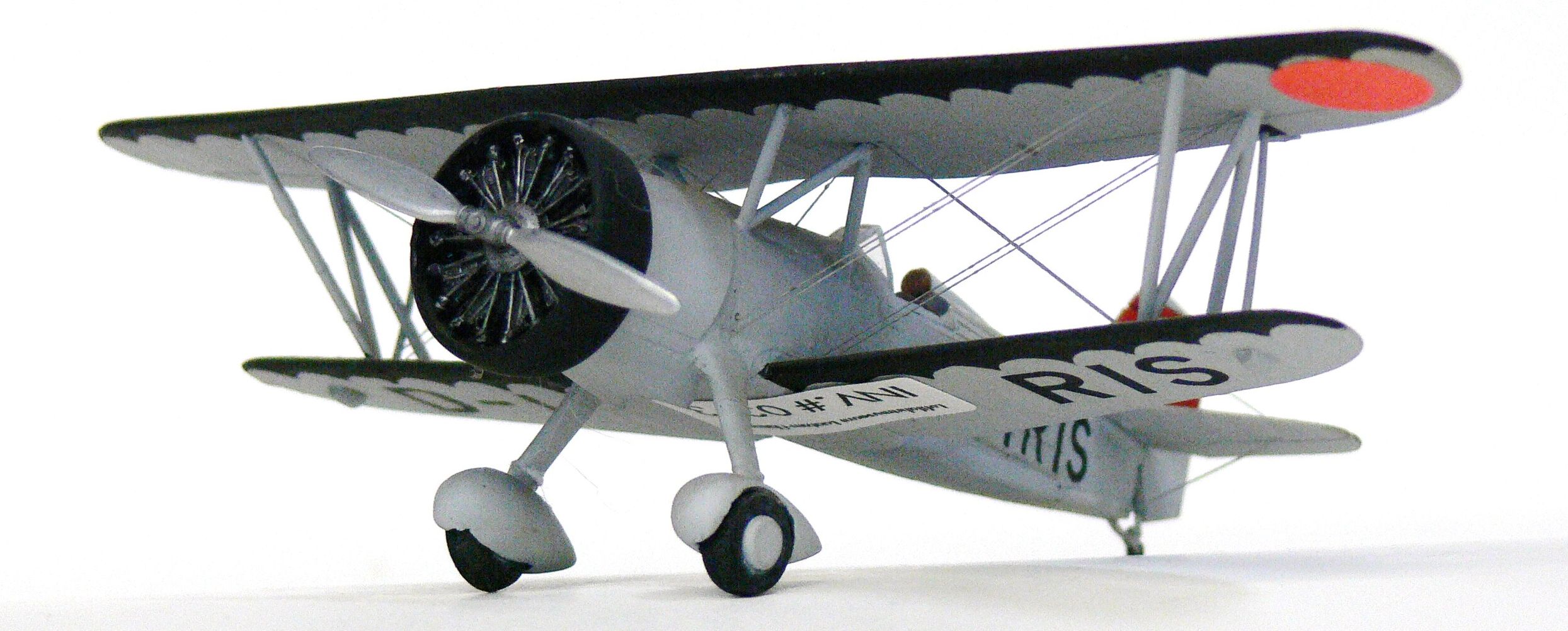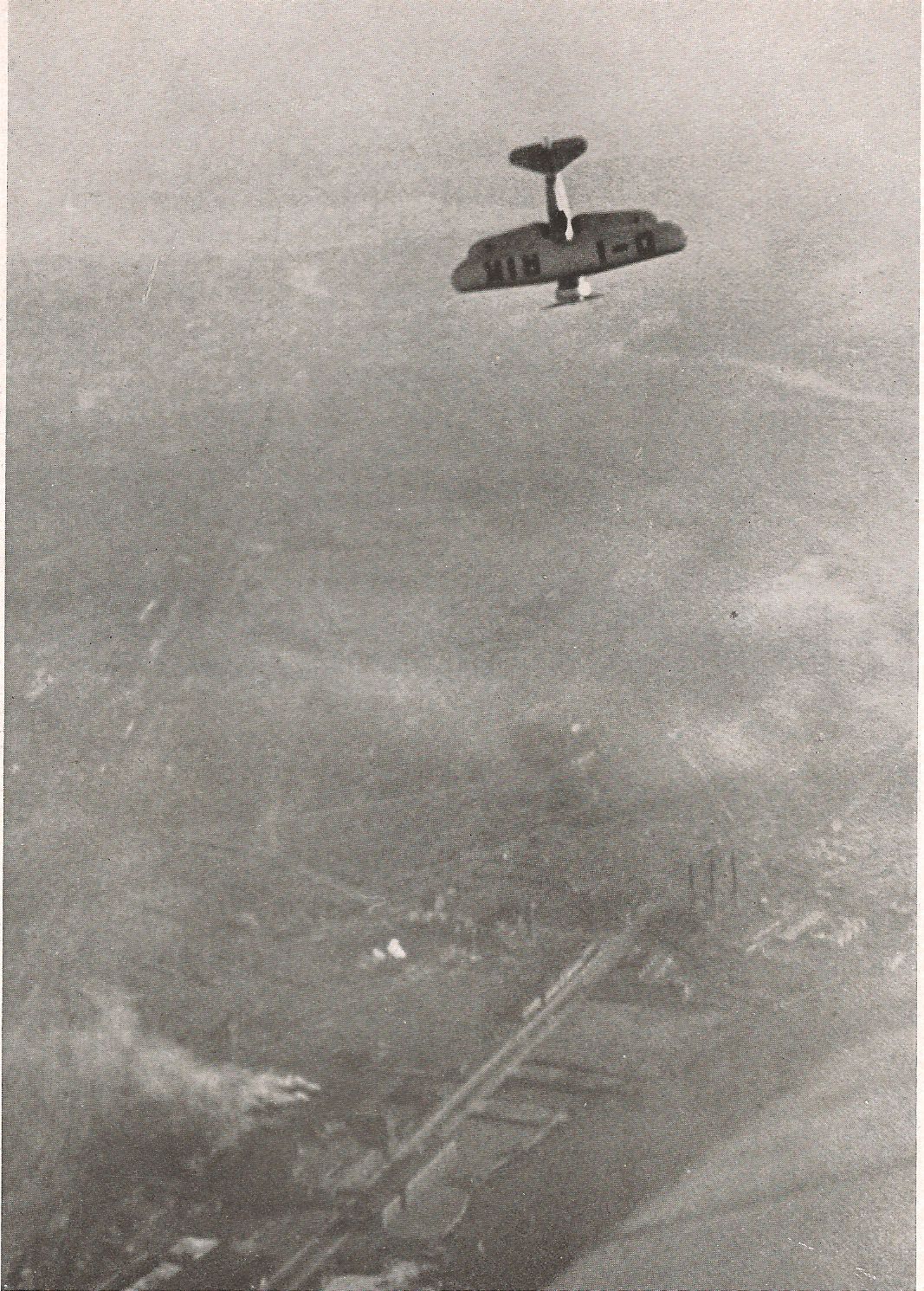Model of the month June 2018 Curtiss F11C
Curtiss F11C Goshawk

The Goshawk was a US Navy carrier, fighter and dive fighter of the early 1930s. This type became particularly well known in Germany because the RLM (Reich Aviation Ministry) bought two of them in early 1934 (D-IRIK and D-IRIS). The reason for this was Hermann Göring's wish to lure the very well-known and popular pilot Ernst Udet via new Luftwaffe into the NS system. Udet was an apolitical man who just wanted to fly. Things turned out differently, and the Goshawks were the beginning of: aerobatics, nose dives and the development of the dive bomber idea, the means for the new Blitzkrieg or lightning warfare.
In June 1934 the D-IRIS crashed over Tempelhof. Udet was able to save himself with his parachute. After the chaos of war, the D-IRIK finally survived and ended up in the Krakow Aviation Museum, where it was lovingly and extensively restored.
In 1932, the US Navy placed an order with the US company Curtiss (-Wright) for such planes. The fuselage was a metal construction made of tubular steel and covered with fabric, as were control surfaces. The wings were a covered wooden construction, so all in all it was a mixed construction. A total of about 40 aircraft were built.

Technical data (F11C2):
Length 7.62 m, wingspan 9.60 m, wing area 24.34 m², altitude 3.23 m, engine: 1 x air-cooled 9-cylinder radial engine (Curtiss) WrightR-1820-78 Cyclone with 700 HP/520 kW, empty weight 1378 kg, take-off weight 1869 kg, v/max 330 km/h, range 901 km, crew: 1 pilot

Udet 1932 bei den Cleveland Air-Races, USA

Udet mit der Goshawk im Sturzflug 1934 Berlin
